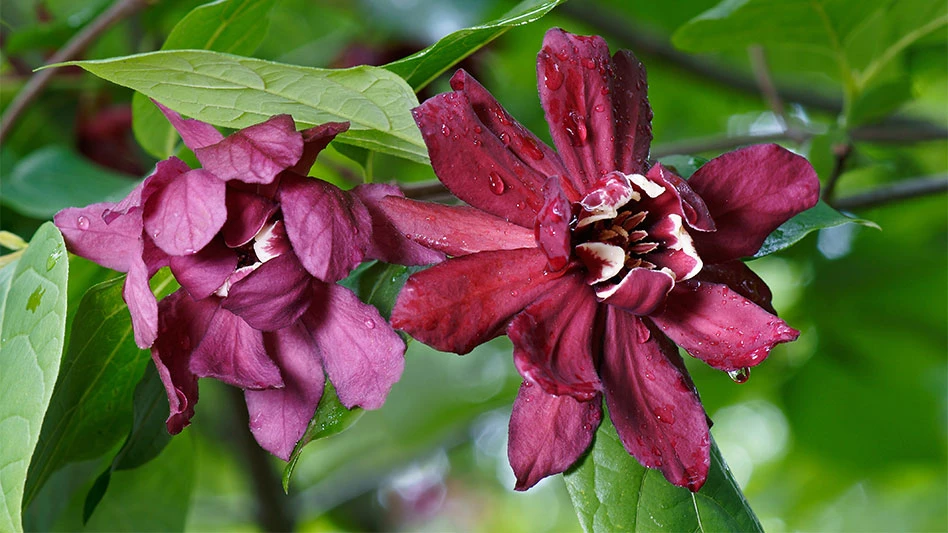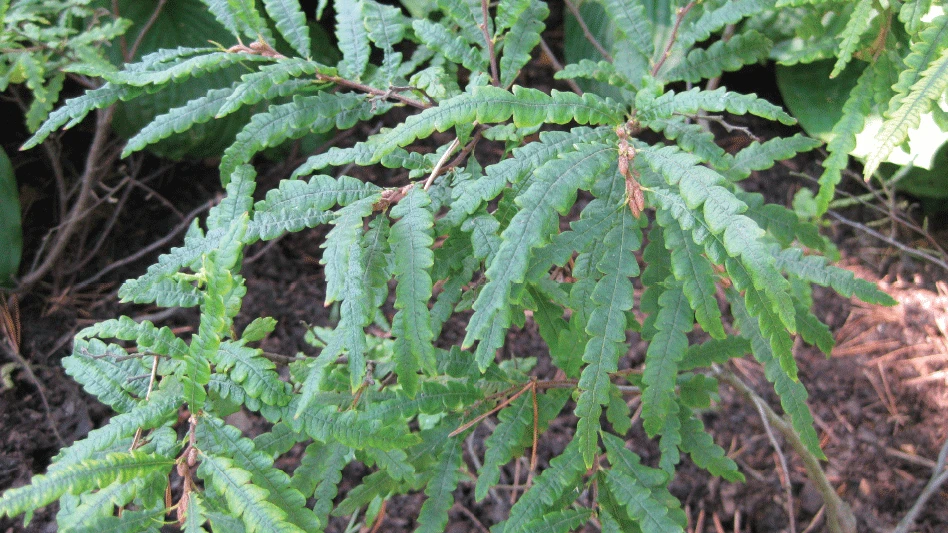 Eliminating defects by removing liner root ball periphery. Eliminating defects by removing liner root ball periphery. |
Perhaps one in a billion seeds becomes a mature tree. In the forest, rodents eat seeds, some are devoured by insects, some seeds rot, and some produce bad root systems. Roots on trees in nature result from seeds germinating on the forest floor. Root systems on mature trees have distinct characteristics that allow them to become large. They develop a spreading array of six to 12 large-diameter roots growing more-or-less straight from the trunk.
We expect all trees we plant in a landscape to become large and produce benefits for everyone to enjoy. This makes it especially important that root systems have characteristics which allow them to grow to maturity. This process begins early in the first stage of propagation when the seed or rooted cutting forms its first roots.
Propagating liners
Most growers germinate seeds or stick cuttings directly in the field, in small containers, or in common trays of substrate. Trees in common trays must be carefully transplanted to a container of some type or planted into field soil. Root defects can form when a tap root is bent at planting. Bent tap roots are hard to correct and can negatively impact tree health and stability.
 LEFT: Quality root ball grown in 3-gallon container without root pruning. RIGHT: Quality 15-gallon root ball resulting from shaving the 3-gallon prior to shifting. LEFT: Quality root ball grown in 3-gallon container without root pruning. RIGHT: Quality 15-gallon root ball resulting from shaving the 3-gallon prior to shifting. |
Trees propagated in containers have their challenges, but technology can help. Roots grow around the pot and down to the bottom naturally, or they are deflected there by container walls. This root form can result in tree instability and an abnormally deep root system not well suited for compacted soil in urban landscapes.
New propagation techniques including pots of thin paper, Oasis cubes, air-root-pruning plastic pots and others show promise in producing quality root systems. Roots should be straight and may branch but should not be directed down or around the container wall. These defects can become a permanent part of the root system and hamper proper growth, or could doom the tree to early death. Once roots begin circling or diving down the side of the pot they should be removed entirely when shifting to larger sizes so retained root segments are oriented straight from the trunk. A look inside root balls we plant today shows that this is not happening with enough regularity.
Roots in containers
Root management continues in a container nursery that grows finished landscape trees. The goal is to produce a root system with straight roots from the trunk, not deflected down or around the pot. If this does not occur, shaving off root ball periphery at each shift to a larger container appears to accomplish the same objective. Our research shows that if you manage irrigation carefully, caliper and height should not slow appreciably. Some nurseries in Florida and California are practicing a version of this and learning how to use it. In addition, root flare should be at or close to the surface. If the root flare is just a couple inches beneath substrate surface, roots deflected by the container wall can girdle the stem.
 LEFT: Roots deflected down by container wall. RIGHT: Removing root ball periphery immediately after planting 15-gallon container. LEFT: Roots deflected down by container wall. RIGHT: Removing root ball periphery immediately after planting 15-gallon container. |
Roots in the field
Roots pruned several times in the nursery grow denser with smaller diameter roots and fewer large roots. This has been shown to increase digging survival and improve landscape performance. Nurseries that routinely move trees from one field to another during production automatically prune roots. Quality nurseries that produce certain trees without moving them implement root pruning in place.
Treat root defects at planting including those wrapping or circling the trunk. Excavation and a pruning saw or clippers are needed to check for and treat defects at trunk. Roots matted against burlap on field grown trees should be removed at planting. A sharp digging spade can be used to remove all peripheral roots on container grown trees; slicing the root ball radially is less effective. If the root ball has no defects on the interior, this will help insure most circling and diving roots are removed from the root system. New roots will grow outward horizontal to soil surface to better stabilize trees.
Ed Gilman is professor, urban trees and landscape plants, University of Florida, egilman@ufl.edu.

Explore the January 2012 Issue
Check out more from this issue and find your next story to read.
Latest from Nursery Management
- How impending tariffs and USDA layoffs impact the horticulture industry
- Shifting the urban environment
- These companies are utilizing plastic alternatives to reduce horticultural waste
- How to create a sustainable plant nursery
- Lamiastrum galeobdolon ‘Herman’s Pride’
- One of rarest plants on earth: Tahina spectabilis
- Leading Women of Horticulture: Angela Labrum, Bailey Nurseries
- Get to know Pat Reilly with NewGen Boxwood and the American Boxwood Society





